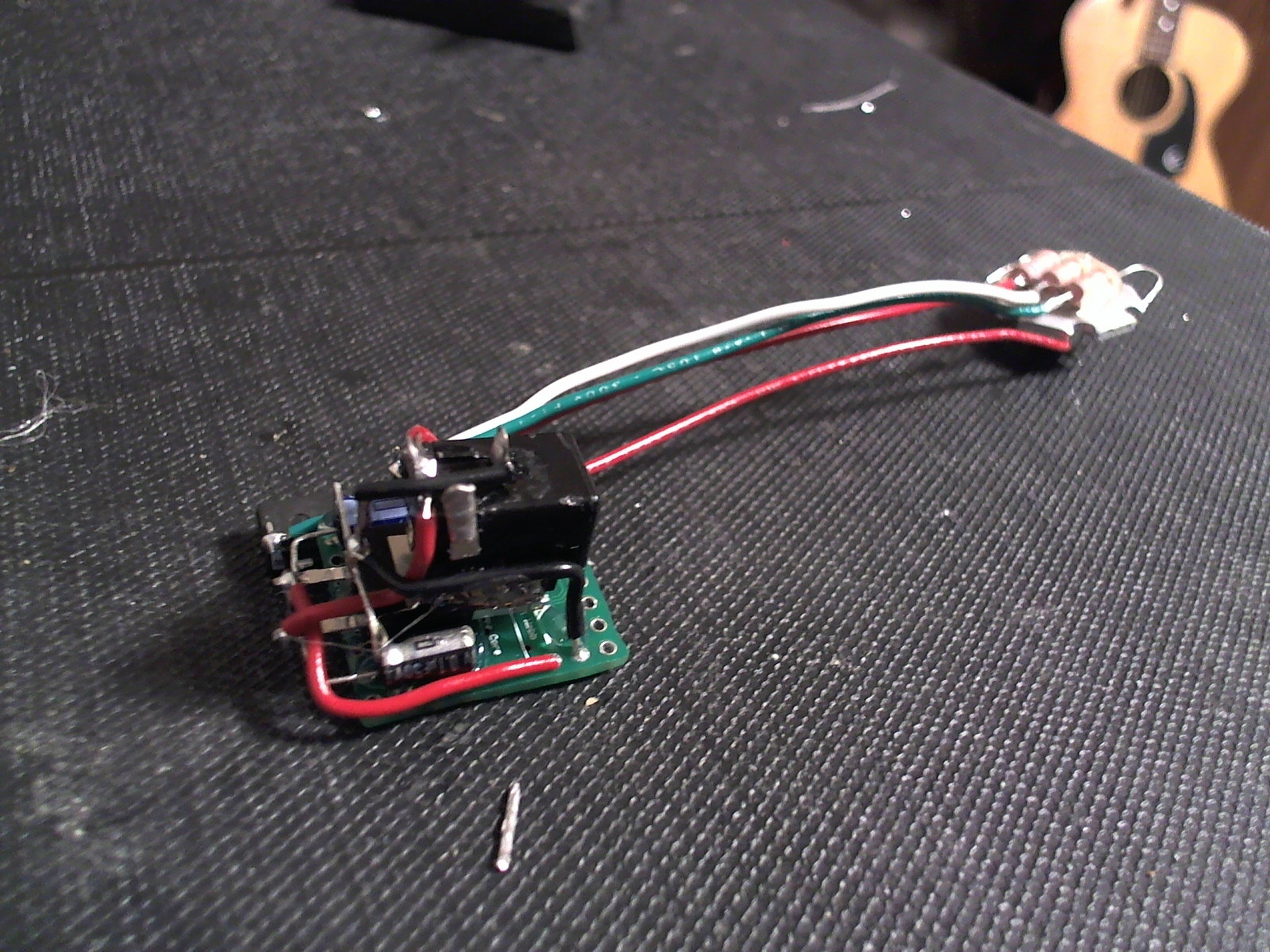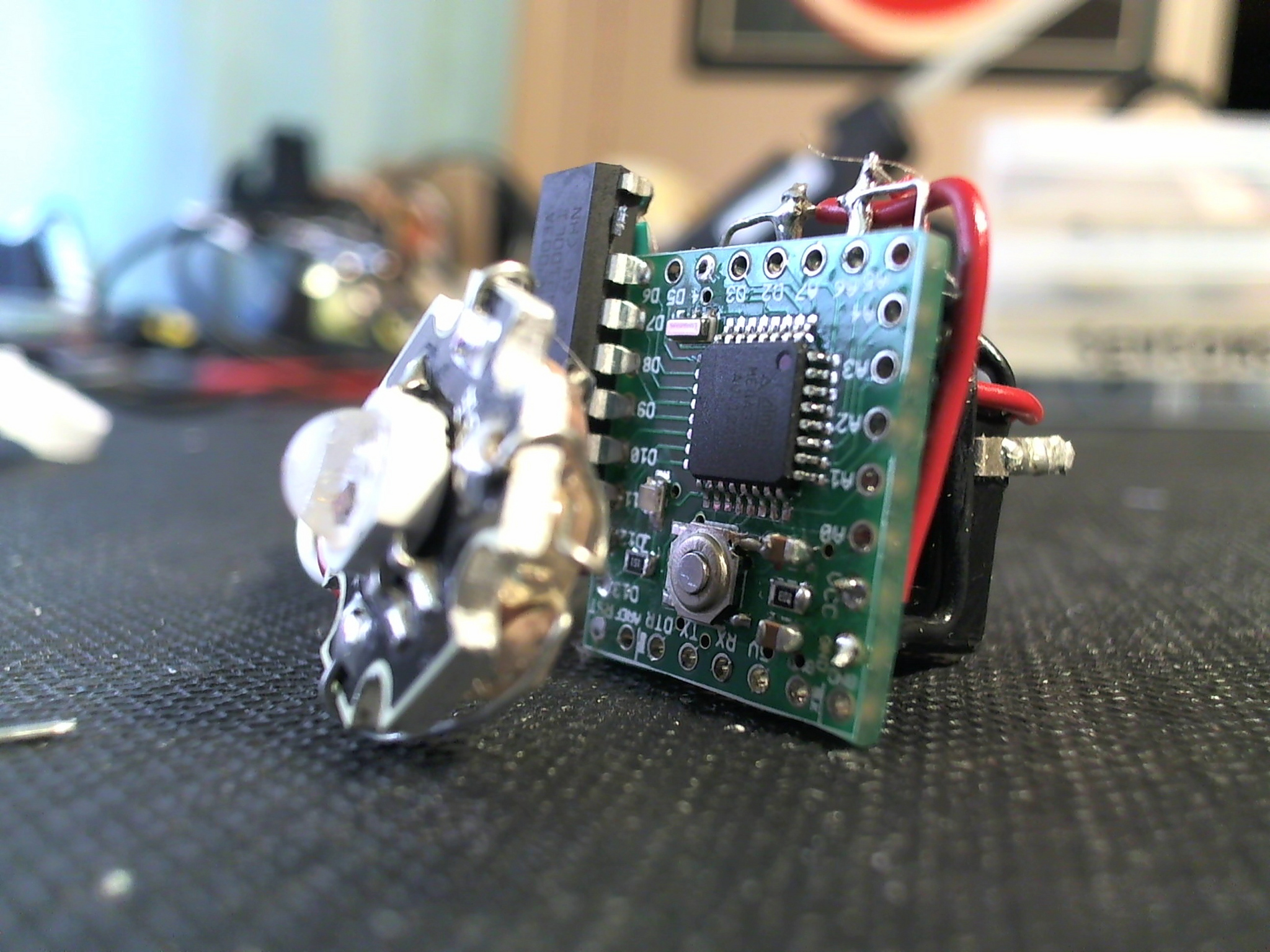Glassblowing + electronics experiments with Kenny Galusha
This week I began collaborating with glassblowing artist and student Kenny Galusha to explore dynamic lighting in hand-blown glass. At first, Kenny had a nice, uniform frosted glass “coral bowl” piece that we both thought would be worth adding some lighting too. Pretty soon we were sticking my LED circuit under and into whatever random glass pieces he had in the studio and quickly found some really pleasant surprises. There is still much to explore for us both, but here is a look at what one week of fun collaboration looks like!
View all of the photos and videos from these experiments on Flickr
Freeformed “light bug” circuit
I knew that having a compact, easily-workable RGB LED circuit would be pretty useful for this work, so I spent an evening whipping up a 3W RGB LED driver with a custom Arduino-compatible ExtraCore RST and a ULN2003. I loaded the Arduino board with my favorite color washing sketch and wired up a 7805 regulator to accommodate for my slightly overpowered wall wart power supply. I soldered and twisted together extra long wires between the RGB LED and the driver to make the LED more maneuverable in small spaces and keep its orientation better.
Experiment #1: frosted bowl of coral
Kenny’s first piece was a hollow, clear “bowl” of coral-like shapes attached to it which had been uniformly sandblasted to produce the frosted white appearance. The idea was that the entire piece would act like a lamp shade, diffusing any light coming in through a hole in the bottom throughout the entire piece. While this did work really well and looked great, Kenny pointed out some things he wanted to experiment with further.
Experiments #2 and #3: surface coloring discoveries
When I brought the light bug circuit into the studio to show Kenny, he thought it might be fun to try illuminating some of the other pieces he had laying around. At first glance, without any lighting, these pieces seem to be pretty benign due to sandblasting. Turns out, once you apply some high-power LED action these suckers come to life! One of the best unexpected attributes of these experiments was how the different pigments of glass coloring react to different wavelengths of light. The surface forms appear to dissolve and melt together when certain colors of light are applied, something that got us both very excited.
Experiment #4: exploring variations
On Thursday, Kenny decided to create a piece containing multiple interesting features so we could experiment with multiple forms and coloring patterns. The overall piece lit up very well, but it was the smaller individual features that really caught my eye. Here is what the complete piece looks like lit up:
You’ll notice there are different shapes attached to the surface of the main body. Each of them are joined onto the base with clear connections, with the theory being that light will want to “flood” into these small features through the connections. However, the features just weren’t light up as brightly as I was expecting, so I tried pressing the RGB LED directly up to each feature for fun. The result blew me away, so I just HAD to make a few videos of the separate features light up directly. Starting with my favorite:


